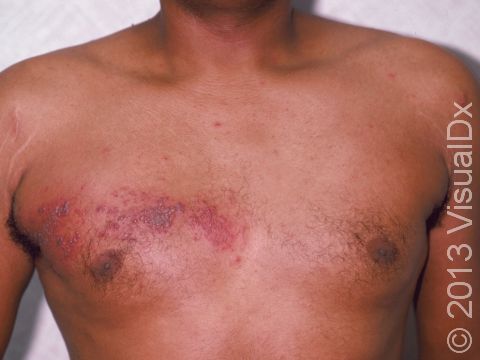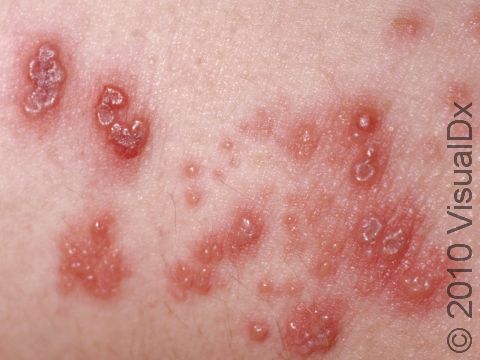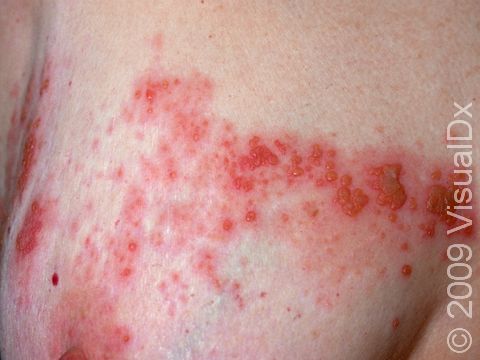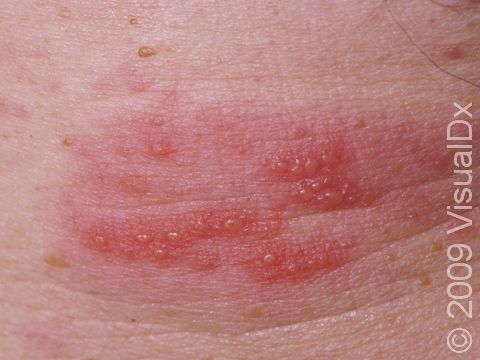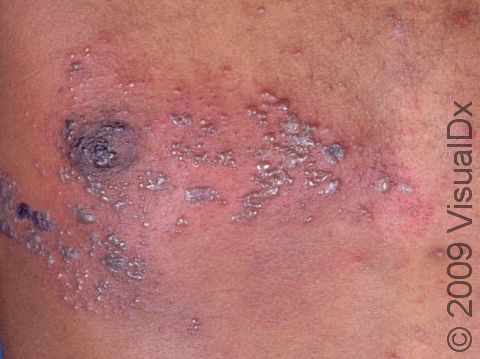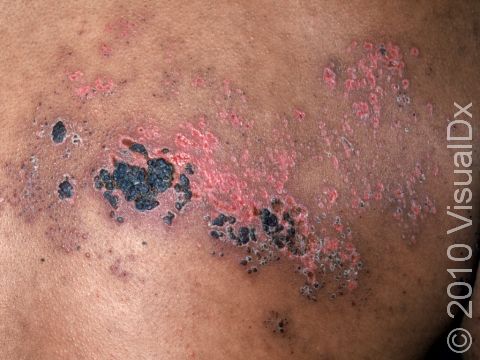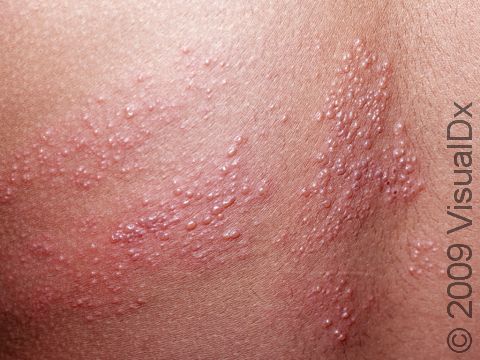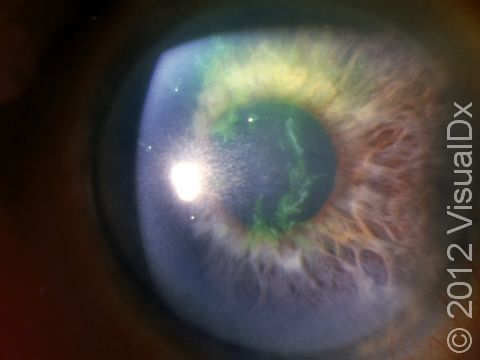Shingles (Zoster)
Shingles (zoster) is a painful rash caused by the varicella-zoster virus, the same virus that causes chickenpox. After a person recovers from chickenpox, the virus remains inactive (dormant) in certain nerves in the body. As you age, your immune system becomes weaker and may not be strong enough to control the virus. Shingles occurs when the virus becomes active again, growing down the nerves to reach the skin and appearing as small, painful, fluid-filled bumps (blisters).
Who's At Risk?
Although anyone who has had chickenpox or the chickenpox vaccine can get shingles, it usually occurs in people older than 50. People in their 70s are 15 times more likely to get shingles than younger adults. It can also be seen in people with weakened immune systems, such as those with cancer, organ transplants, autoimmune diseases, and HIV / AIDS. Shingles affects approximately 1 million people in the United States each year. Most people who have shingles will not get it again, although on rare occasions, it can reappear.
Signs & Symptoms
Pain, itching, and burning or tingling in a specific location on the skin are the first shingles symptoms that develop. After a few days, the affected area will develop painful, smooth, red papules (small, solid bumps). In darker skin colors, the redness may be harder to see, but clustered bumps can be felt. The papules become vesicles (small blisters that are firm to the touch) over 1-2 days and then burst after 5-7 days, leaving sores on the skin that eventually form scabs. Individuals with shingles may also have fever, chills, headache, and generalized body aches. Because the virus travels down a nerve to the skin, shingles usually appears on only one side of the body and affects a specific area of the skin. Shingles commonly occurs on the chest, but it may also affect other parts of the body, including the face. The blisters may be in a cluster or in a linear pattern. Most people completely recover from shingles within 4 weeks.
A particularly serious form of shingles occurs on the face and can affect the eye, possibly affecting vision if it is not promptly treated.
One of the most common complications of shingles is chronic pain in the area of the skin where the rash occurred. This is called postherpetic neuralgia. It is more common in older individuals and in people who had severe symptoms with the initial rash. It occurs in almost half of people who are older than 60 when they get shingles.
Self-Care Guidelines
Although shingles usually heals without medical care, call your health professional if you suspect shingles before following these self-care instructions:
- Keep the area clean with mild soap and water.
- For pain, apply cool, damp compresses, and take either acetaminophen (Tylenol) or ibuprofen (Advil, Motrin).
- Apply calamine (Caladryl) lotion to help relieve itching.
Shingles is only contagious to people who have never had chickenpox or the chickenpox vaccine. In such people, it can be spread by direct skin-to-skin contact with the blister fluid. Once the blisters have formed scabs, they are no longer contagious.
Treatments
Oral antiviral medication, such as acyclovir (Zovirax), valacyclovir (Valtrex), or famciclovir (Famvir) may help if given within 72 hours after shingles lesions first appear. These medicines do not cure shingles, but they can decrease the amount of time you have pain and a rash. Antiviral medications may also decrease your chance of getting postherpetic neuralgia and may decrease your risk of developing visual problems if you have shingles on the face.
Oral corticosteroids and pain relievers, such as acetaminophen and ibuprofen, may also be given to control pain. If the area is healed but you still have pain, your health provider may prescribe a topical medication called capsaicin (Capzasin P, Zostrix) or a cream or local anesthetic patch containing lidocaine (Lidoderm).
If you have shingles on your face, your health provider will likely send you to an eye specialist to evaluate if the virus is affecting your eye.
The Centers for Disease Control and Prevention (CDC) recommends the vaccine Shingrix to prevent shingles and postherpetic neuralgia. It is recommended for anyone older than 50, regardless of whether they have had shingles before. It is a two-dose injection that can be given by a clinician or pharmacist in the upper arm.
Visit Urgency
Call your medical professional if you think you may have shingles, as there are medications that may speed healing if they are given within the first 72 hours after the rash appears.
Trusted Links
References
Bolognia J, Schaffer JV, Cerroni L. Dermatology. 4th ed. Philadelphia, PA: Elsevier; 2018.
Centers for Disease Control and Prevention. Vaccines and Preventable Diseases: Shingles Vaccination. https://www.cdc.gov/vaccines/vpd/shingles/public/shingrix/index.html. Accessed online on February 27, 2023.
James WD, Elston D, Treat JR, Rosenbach MA. Andrew’s Diseases of the Skin. 13th ed. Philadelphia, PA: Elsevier; 2019.
Kang S, Amagai M, Bruckner AL, et al. Fitzpatrick’s Dermatology. 9th ed. New York, NY: McGraw-Hill Education; 2019.
Last modified on June 25th, 2024 at 3:49 pm

Not sure what to look for?
Try our new Rash and Skin Condition Finder
